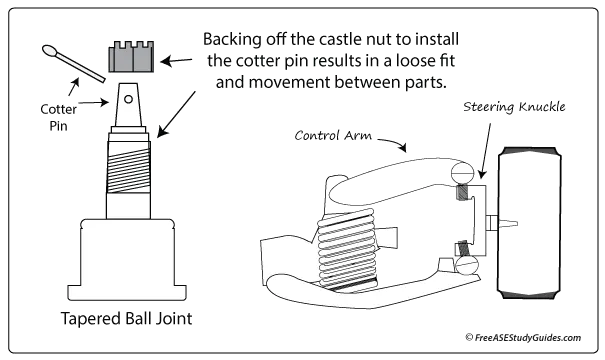ASE A4 Steering Suspension Practice Test
16. The Electric Power Assist Steering EPAS systems controller requires input from all of the following EXCEPT:
- A. The vehicle speed sensor.
- B. The steering angle sensor.
- C. The power steering pressure switch.
- D. The torque sensor.
17. A vehicle with (VES) variable assist steering feels loose and sloppy at highway speeds. Technician A says a problem with the vehicle speed sensor's signal to the controller will result in this condition. Technician B says a variable assist power steering system reduces hydraulic pressure at highway speeds. Who is correct?
- A. Technician A
- B. Technician B
- C. Both A and B
- D. Neither A or B
18. A vehicle with a ribbed serpentine belt chirps when it first starts in the morning. Which of the following is the LEAST likely cause of this noise?
- A. A worn serpentine belt.
- B. Aerated power steering fluid.
- C. A weak belt tensioner.
- D. Moisture.
19. Even at low speeds, a vehicle leans and has excessive body sway when turning. Which of the following is MOST likely causing this sway?
- A. Worn control arm bushings.
- B. A worn idler arm.
- C. A binding ball joint.
- D. Worn stabilizer bar bushings.
20. After torquing a tapered ball joint to the spindle, the technician backs off the castle nut to install the cotter pin. Technician A says this procedure keeps the ball joint from binding. Technician B says this results in a loose fit and a clunking or popping sound. Who is correct?
- A. Technician A
- B. Technician B
- C. Both A and B
- D. Neither A or B
